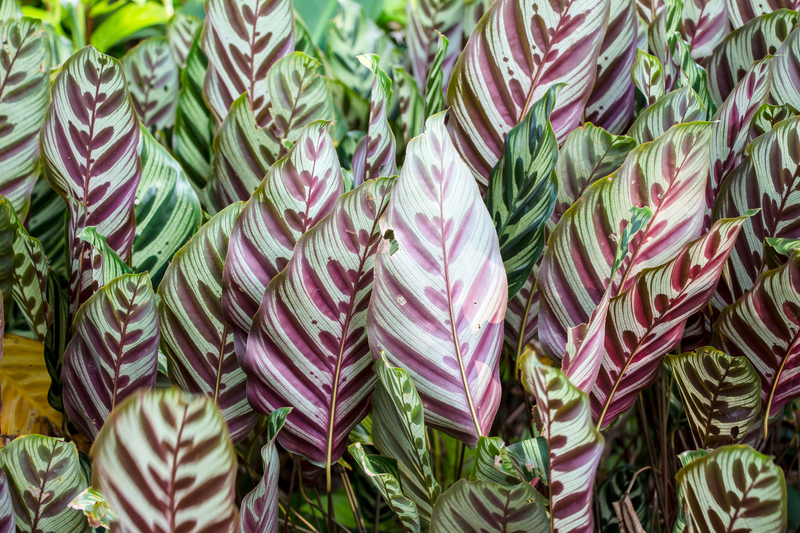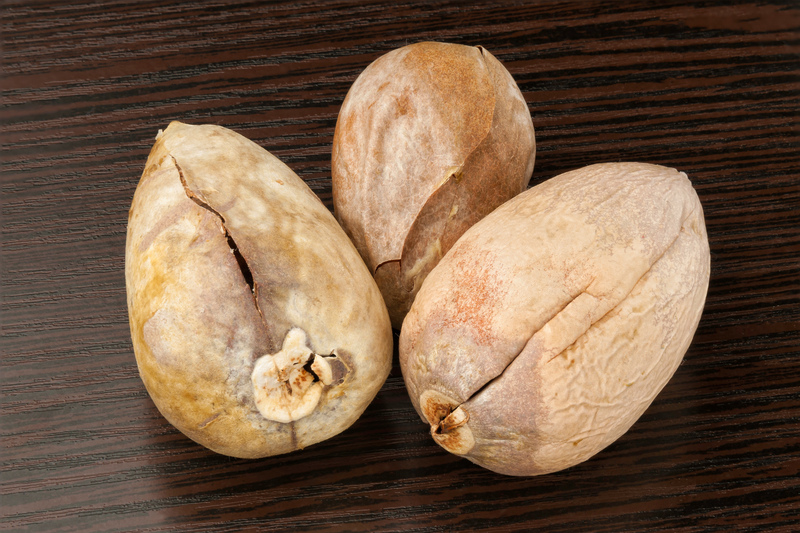Frost Foes: Strategies to Shield Your Garden from Winter's Grip
Posted on 23/09/2025
Frost Foes: Strategies to Shield Your Garden from Winter's Grip
Winter can be a magical time, transforming landscapes with a glistening frosty coat. However, for gardeners, the arrival of frosty nights and biting winds presents a unique challenge. Protecting your garden from frost is not just an act of preservation; it's an investment in the longevity and vitality of your plants. In this comprehensive guide, discover trusted methods and innovative tactics to safeguard your beloved green spaces from winter's grip.
Understanding Frost: The Enemy of Winter Gardens
Before exploring garden frost protection strategies, it's essential to understand what frost is, how it forms, and why it's particularly hazardous for your garden.
What is Frost?
Frost occurs when water vapor in the air condenses and freezes onto surfaces as temperatures drop below freezing. This commonly happens overnight during cold spells. Frost can damage or kill plant cells, leading to wilted leaves, blackened stems, and, in severe cases, total plant loss.
Why is Frost Harmful to Plants?
- Cellular Damage: Ice crystals form within plant tissues, rupturing cell walls.
- Water Loss: Frost draws moisture from leaves and stems, causing dehydration.
- Growth Stagnation: Damaged plants stop growing or recover very slowly in spring.
Some plants--such as tender annuals and exotic species--are more sensitive to frost exposure than hardy native varieties.

Early Preparation: The Key to Beating Winter's Chill
The most effective frost protection begins long before the first icy night. Here are powerful preparation strategies to fortify your garden:
1. Choose Hardy Plant Varieties
Start with cold-resistant plants. Native species and cultivars bred for your climate zone are naturally more adept at surviving low temperatures. Check your regional planting guides for suggestions on robust winter plants.
2. Site Selection & Microclimate Exploitation
Where you position your garden beds can make a significant difference. Frost often settles in low-lying or wind-protected spots. Place sensitive plants near south- or west-facing walls that absorb and radiate heat, or under the shelter of evergreen trees.
3. Amend Your Soil
Well-draining soils help avoid waterlogging, which can magnify frost's impact. Work in organic matter like compost to improve both drainage and thermal insulation.
Real-Time Frost Defense: Protecting Your Garden from Freezing Temperatures
When frost warnings are issued, these proactive measures will shield your garden from winter's harsh grip.
Cover and Insulate Your Plants
- Use Frost Cloths and Blankets: Drape plants with horticultural fleece, old sheets, or blankets to trap warmth overnight. Secure coverings to prevent wind from blowing them away.
- Row Covers and Tunnels: Employ floating row covers, cold frames, or low tunnels made from clear plastic or fabric. These create mini-greenhouses, retaining both heat and humidity around your plants.
- Mulching: Apply 2-4 inches of straw, bark chips, or shredded leaves around plant bases. Mulch insulates roots and shields soil from temperature fluctuations.
- Cloche It Up: Place glass or plastic cloches over individual plants for an instant, reusable barrier against frost.
Water Wisely
It may feel counterintuitive, but moist soil retains heat better than dry. Water plants during midday before a cold snap; avoid late evening watering, which may freeze overnight.
Move Potted Plants Indoors or Together
- Indoors: Relocate pots to a garage, shed, or porch overnight.
- Cluster for Warmth: Group pots together, preferably near a south-facing wall or in a sheltered corner, to reduce heat loss and maximize warmth retention.
Avoid Late-Season Pruning
While it might be tempting to tidy your garden before winter, avoid major pruning late in the season. Pruning encourages new, tender growth more vulnerable to frost damage.
Long-Term Frost-Protection Solutions for Gardens
For those seeking permanent strategies to protect gardens from frost, these landscape investments pay off year after year.
Create Windbreaks
Install fences, hedges, or thick plantings of evergreens to reduce wind chill and limit frost penetration. Strategic positioning of windbreaks can shield entire beds from cold air currents.
Build Raised Beds or Berms
Raised beds and berms drain excess water more effectively, preventing chilling and waterlogged soils that exacerbate root damage.
Install Thermal Mass Objects
Place rocks, bricks, or water-filled containers near vulnerable plants. These objects absorb solar heat during the day and slowly release it overnight, gently buffering temperature swings.
Protect with Garden Structures
- Greenhouses and Polytunnels: For serious gardeners, a greenhouse offers year-round protection from frost and creates optimal growing conditions for a wider variety of plants.
- Cold Frames: Smaller, more affordable than greenhouses, cold frames provide effective shelter for seedlings, tender perennials, and overwintering vegetables.
Additional Frost-Fighting Tips and Tricks
Maximizing garden survival through winter requires both preparation and creativity. Here are a few extra techniques for managing garden frost risk:
- Monitor Microclimates: Identify and track "frost pockets" in your garden--these are spots where cold air settles. Use a thermometer to check soil and air temperatures in several locations.
- Utilize Christmas Lights: Draping non-LED (old-style incandescent) Christmas lights over shrubs and small trees provides gentle background heat--just enough to raise nighttime temperatures by a degree or two.
- Upcycle for Protection: Use milk jugs with their bottoms cut off, buckets, or upside-down flowerpots as temporary cloches in emergencies.
- Ensure Ventilation by Day: Remove or vent covers on sunny days to avoid overheating and fungal problems.
Emergency Measures for Sudden Frost Events
- Cover susceptible plants just before sunset and remove covers mid-morning after frost thaws naturally.
- Do not rub off frost by hand, as this can damage leaf tissues further.
- Assess wilted or blackened plants after several days; many will recover, so avoid hasty pruning or removal.
Common Questions About Winter Garden Frost Protection
Readers frequently ask about the best advice and practical outcomes when shielding their gardens from winter's chill. Here are answers to some popular questions:
Can You Completely Prevent Frost Damage?
While it's impossible to control the weather, combining several of the strategies above can dramatically reduce frost damage--especially when anticipating cold fronts and acting early.
Are Certain Plants Frost-Proof?
Native, established, and properly mulched perennial plants can typically handle typical winter conditions. However, all plants have some threshold for cold; even the hardiest may suffer during extreme or sudden cold snaps.
Is Mulching Enough on Its Own?
Mulching is a vital protective measure, but for tender species or during severe frosts, it should be combined with physical covers or row tunnels for maximum efficacy.
When Should You Remove Winter Protections?
Begin gradually in late winter or early spring as the risk of sustained frost passes. Be cautious of sudden cold fronts, and keep materials handy for unexpected freezes.

Spring Recovery: Helping Your Garden Bounce Back From Frost
Despite the best care, some plants may experience frost injury. Here's how to promote rapid recovery:
- Wait Before Pruning: Resist the urge to remove frost-damaged growth until late spring, as it can insulate living tissues below.
- Fertilize Sparingly: Heavy feeding promotes tender new growth, which may be vulnerable to late-season frosts.
- Hydrate Deeply: Provide gentle, consistent watering as temperatures rise to encourage root and shoot revival.
Conclusion: Becoming a Frost Foe Champion
Shielding your garden from winter's icy grip is a dynamic process, blending forethought, preparation, and active intervention. By choosing cold-hardy plants, mastering timely coverings, and investing in long-term structures, even amateur gardeners can stand strong against frost's formidable embrace.
With a little planning, you can transform your backyard from a frost-scorched graveyard to a perennial blue-ribbon beauty. Remember, every action you take today is a gift to your garden tomorrow. Embrace these frost protection strategies and watch your garden thrive through winter--and beyond!
Key Takeaways:
- Start preparing for frost long before winter begins.
- Layer defense: combine physical covers, mulch, and smart watering.
- Permanent garden structures offer the best winter frost protection for serious enthusiasts.
- Monitor microclimates to tailor your defense strategies.
This winter, become a frost foe--and let your garden flourish, no matter how cold it gets.

